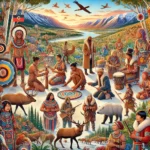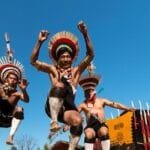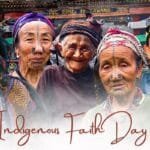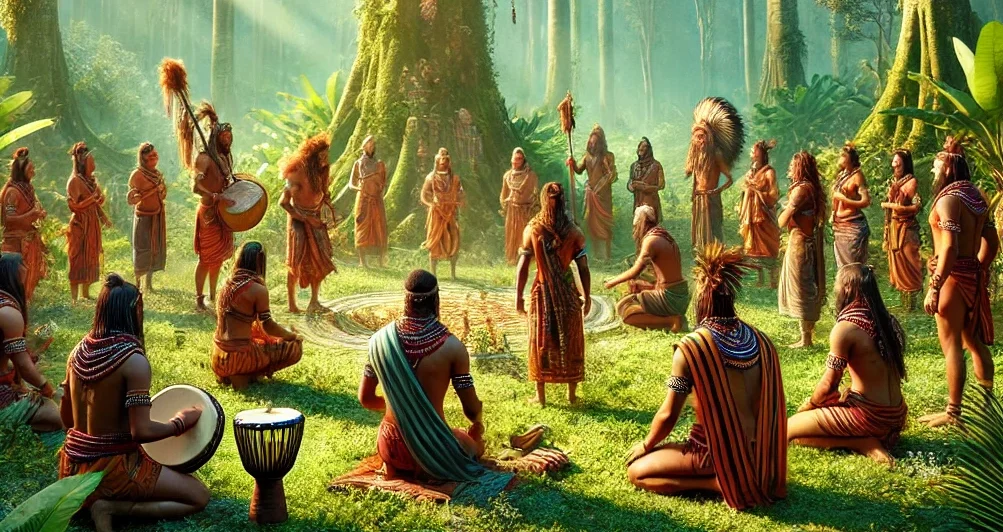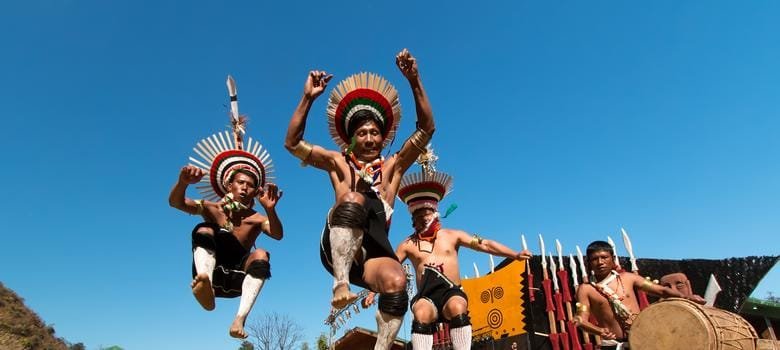Tribal communities in India possess a rich and diverse cultural and religious heritage, deeply rooted in nature worship, animism, and reverence for ancestral spirits. Their indigenous faiths, often referred to as Sarna, Santhal (Sari or Bidin), or other region-specific traditions, embody their harmonious relationship with nature and their unique worldview. However, the interactions between tribal religious codes and major organized religions like Hinduism, Christianity, and Islam have often been marked by tension and attempts at assimilation or conversion.
The Tribal Religious Code
Tribal religious practices in India are primarily based on animism and nature worship. Common elements include:
- Sarna Dharma: Practiced by tribes like the Munda, Oraon, and Ho, Sarna Dharma involves worshiping nature, sacred groves (Sarna Sthal), and a supreme deity known as Dharmes or Singbonga. Rituals are closely tied to agricultural cycles and community well-being.
- Santhal (Sari or Bidin) Beliefs: The Santhal tribe worships Marang Buru (Supreme God) and Jaher Ayo (Mother Earth). Their rituals involve dance, music, and communal gatherings, underscoring their collective cultural identity.
- Other Tribal Beliefs: Different tribal communities have unique deities, rituals, and sacred sites, reflecting their localized understanding of spirituality and the environment.
Hindu Scriptures and Tribal Communities
Hindu scriptures often classify non-Vedic communities, including tribal groups, as “Asuras” or “Rakshasas.” These terms have historically been used to describe groups outside the mainstream Vedic fold. For instance:
- Demonization: Myths and epics like the Ramayana and Mahabharata often depict tribal and indigenous figures, such as Ravana and Hidimba, as antagonists or demons, marginalizing their cultural narratives.
- Assimilation: Over time, Hindu practices have absorbed tribal deities, reinterpreting them within the Hindu pantheon. Examples include the identification of tribal gods with Shiva or Durga.
Christianity and Tribal Society
Christian missionaries have been active among tribal communities, particularly in states like Jharkhand, Odisha, and Chhattisgarh. While conversion efforts have brought education and healthcare, they have also led to cultural and religious conflicts:
- Demonization of Tribal Beliefs: Tribal deities and practices are sometimes branded as pagan or demonic. For example, the Nemha Bible translation in the Kurukh language reportedly referred to Sarna Sthals as demonic, advocating their destruction.
- Cultural Displacement: Conversion often entails abandoning traditional practices, leading to a loss of cultural identity and community cohesion.
Islam and Tribal Society
Islamic interactions with tribal communities have been less prominent but still present:
- Monotheism vs. Polytheism: Islamic theology views tribal animistic practices as shirk (polytheism), often discouraging their continuation among converts.
- Conversion Efforts: Islamic missionary activities among tribals have promoted adherence to Islamic rituals and practices, sometimes clashing with indigenous traditions.
- Targeting of Tribal Women: Reports have highlighted instances where tribal women are targeted for conversion, which subsequently influences tribal demographics and political dynamics. Through these conversions, tribal communities sometimes face challenges related to land ownership and political representation, as new social dynamics emerge that dilute tribal rights.
Tribal Survival: Challenges and Paths Forward
Tribal communities face immense challenges in preserving their religious and cultural identity amidst the growing influence of organized religions and modernization. The outcomes of these pressures vary:
- Conversion to Organized Religions: Many tribal individuals convert to Hinduism, Christianity, or Islam due to social, economic, or educational incentives. These conversions often result in the loss of traditional practices and beliefs.
- Cultural Erosion: Without robust support for their traditions, tribal practices risk disappearing, similar to the fate of the Andamanese tribes, many of whom have been marginalized or assimilated.
- Resistance and Revitalization: Efforts to resist cultural erasure include movements advocating for the Sarna Code, education on tribal heritage, and political mobilization to protect sacred sites and rituals. Tribes like the Santhals and Mundas are striving to preserve their identity by blending modern education with traditional values.
Historical Movements to Protect Tribal Beliefs
- Birsa Munda’s Religious Movement: In the late 19th century, Birsa Munda, a revered tribal leader and freedom fighter, initiated a religious and socio-political movement to protect tribal beliefs and resist the exploitation of tribal communities by landlords, missionaries, and colonial authorities. His efforts strengthened tribal identity and fostered unity among various tribes.
- Kartik Oraon’s Movement in the 1970s: Kartik Oraon, a prominent tribal leader, along with other leaders, spearheaded a movement to counter religious conversions and promote the preservation of traditional tribal practices and culture. This movement played a crucial role in raising awareness about the importance of safeguarding tribal heritage.
- Heraka Religious Movement: In the early 20th century, Haipou Jadonang and Rani Gaidinliu led the Heraka religious movement among the Zeliangrong Naga tribes. The movement sought to revive traditional tribal religion and resist the imposition of Christianity and colonial rule. Heraka emphasized monotheistic worship of Tingkao Ragwang (Supreme God) while preserving tribal customs and practices. Rani Gaidinliu’s leadership in this movement symbolized the fight for cultural and political autonomy.
Tribal Resistance and the Push for Recognition
The resistance to religious encroachment is evident in the demand for a separate Sarna Code, which seeks official recognition for tribal religions in the Indian census. This code aims to:
- Protect tribal cultural and religious practices from dilution.
- Provide constitutional safeguards against forced conversions and discrimination.
- Promote awareness and respect for tribal spirituality as a legitimate belief system.
The future of tribal communities in India depends on a balanced approach that respects their autonomy, protects their cultural heritage, and integrates them into the broader society without erasing their identity. While some tribes may succumb to pressures and assimilate into organized religions, others are likely to persist, drawing strength from movements advocating for their rights and recognition. Ensuring their survival requires concerted efforts from the government, civil society, and tribal leaders to safeguard their unique heritage and way of life.

